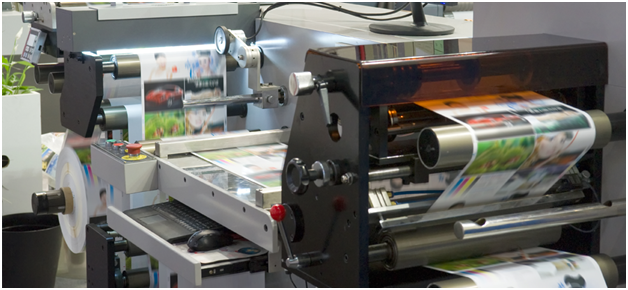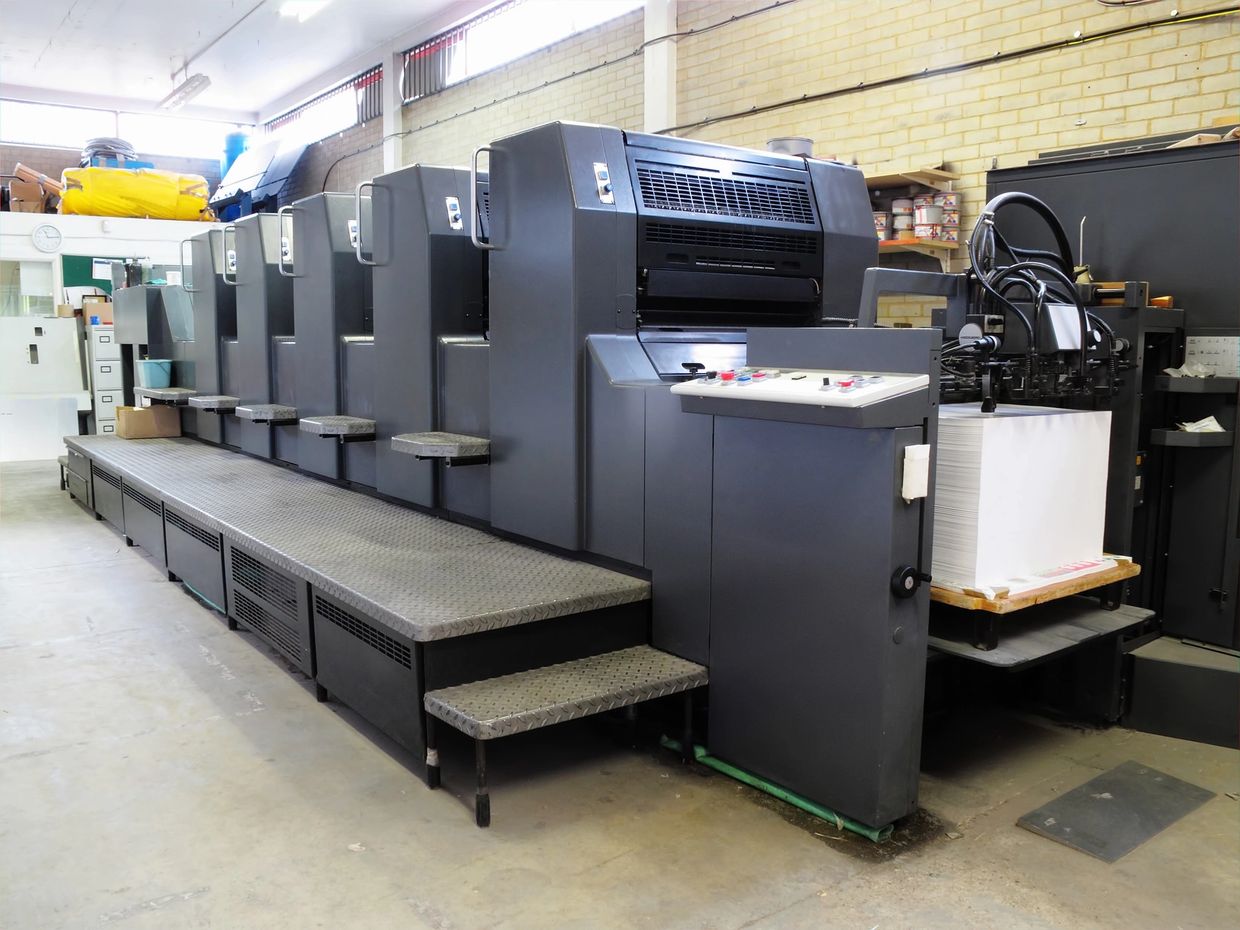The Essential Overview to Recognizing Litho Printing and Its Applications
Litho printing stands as a considerable approach in the printing market, rooted in the concepts of oil and water repulsion. This technique not just delivers top notch images yet likewise caters to numerous business demands. Its applications range from marketing materials to packaging, showcasing its flexibility. As the market adapts to new innovations, the development of litho printing questions about its future and significance in a digital landscape. What exists ahead for this sustaining technique?

What Is Litho Printing?
Litho printing, a widely utilized printing strategy, relies upon the concept of oil and water repulsion. This approach employs a level printing surface area, usually a metal plate, which is dealt with to assure that the picture locations are receptive to oil-based inks while the non-image areas repel them. The procedure begins with the production of a photo on the plate, commonly through illustration or photographic means. As soon as the photo is prepared, home plate is wetted with water, adhered to by the application of ink. The ink sticks just to the image locations, enabling accurate recreation of graphics and message. Litho printing is preferred for its capacity to generate top notch prints with great detail and dynamic colors. It is typically used in industrial applications, consisting of papers, magazines, and product packaging, showcasing its versatility and performance in meeting the demands of modern printing.
The Background of Lithography
Although lithography is a contemporary printing staple, its beginnings trace back to the late 18th century when German playwright Alois Senefelder designed the strategy in 1796. Originally established as a method for reproducing texts and photos, lithography utilized a level stone surface area to produce prints via a chemical process. Senefelder's technology permitted better flexibility and creative expression compared to previous printing methods.By the 19th century, lithography obtained prevalent approval, becoming a prominent option among musicians and publishers. It allowed the mass production of pictures, maps, and posters, significantly impacting the printing sector. The technique even more advanced with the introduction of lithographic presses, improving efficiency and quality.As the commercial transformation progressed, lithography adjusted to fulfill the needs of business printing, leading the way for modern-day applications. Today, it remains a necessary strategy in various markets, consisting of posting, packaging, and great art recreation.
How Litho Printing Works
A key function of litho printing is its dependence on the principle of oil and water repulsion - litho printing. In this process, images are moved from a flat surface, usually a metal or polymer plate, to paper. The plate is dealt with to ensure that the areas meant for printing bring in ink, while the non-image areas repel it due to their affinity for water. The printing starts by dampening the plate with water, which complies with the non-image locations. Subsequently, an oil-based ink is applied, sticking just to the intended image areas.When the plate comes into contact with the substrate, the ink is transferred, developing a print. The litho printing process is qualified of producing top notch pictures with great information. It is commonly used for mass manufacturing due to its effectiveness and uniformity, making it a favored method for business printing applications
Advantages of Litho Printing
One remarkable benefit of litho printing is its capability to generate top notch pictures constantly, making it an excellent selection for commercial tasks. This printing technique makes use of a flat printing plate, guaranteeing even ink circulation and sharp details. Litho printing is additionally renowned for its shade accuracy, enabling lively and true-to-life recreations, which is crucial for branding materials.Moreover, it sustains a variety of substratums, including paper, cardboard, and also particular plastics, improving its adaptability. The process is affordable for large runs, as economic climates of range minimize per-unit costs. Additionally, litho printing has a fast turnaround time, permitting effective production schedules.Its resilience also means that published products stand up to fading, guaranteeing that the last item preserves its aesthetic charm with time. Overall, these benefits make litho printing a recommended choice across numerous industries, adding to its long-lasting appeal.
Applications of Litho Printing in Service
As services increasingly look for trusted and high-quality printing remedies, litho printing becomes a principal in different applications. This method is particularly favored for producing advertising and marketing materials such as brochures, flyers, and directories, thanks to its capability to deliver vibrant colors and sharp pictures. Additionally, litho printing is regularly employed for packaging services, allowing companies to create captivating labels and boxes that improve product appeal.In the field of business identification, litho printing contributes in creating professional stationery, calling card, and marketing merchandise, which help reinforce brand recognition. Furthermore, it is commonly utilized in the publishing industry for printed materials such as books and litho printing magazines, where consistent high quality is vital. Generally, litho printing's convenience and performance make it a vital tool for companies aiming to interact properly and establish a solid market existence.
Artistic Use Litho Printing
Litho printing functions as a versatile medium in the domain name of printmaking, offering musicians a special method to reveal their imagination. This method permits a vast array of creative applications, from standard prints to modern analyses. By discovering the subtleties of litho printing, musicians can harness its unique qualities to boost their work.

Printmaking Strategies Review
The artistry of printmaking encompasses a varied variety of techniques, with litho printing standing out for its unique technique to photo creation. This approach counts on the concept of oil and water repulsion, enabling artists to draw directly onto a sedimentary rock or metal plate with an oily medium. When prepared, home plate is moistened and tattooed, transferring the photo onto paper with stress. Litho printing is celebrated for its ability to generate fine details and abundant tonal variants, making it a popular choice amongst artists. Furthermore, the procedure is flexible, fitting both conventional techniques and modern-day adjustments. This adaptability allows litho printing to bridge different artistic designs, enhancing the printmaking landscape with its distinctive characteristics and capacities.
Special Artistic Applications
Checking out the unique artistic applications of litho printing exposes its exceptional adaptability in numerous innovative fields. Musicians utilize litho printing to develop complex designs and appearances, permitting meaningful and thorough jobs. The procedure promotes the recreation of dazzling shades, making it suitable for images and great art prints. Lots of contemporary musicians welcome lithography for its ability to integrate conventional methods with modern concepts, leading to ingenious artwork. Furthermore, litho printing is usually used in the manufacturing of minimal edition prints, boosting their worth and allure. The responsive high quality of litho prints includes a distinct dimension, attracting collection agencies and art enthusiasts alike. Generally, litho printing continues to be a substantial tool for artistic expression, linking timeless techniques with modern creativity.
The Future of Litho Printing in a Digital World
As the printing sector evolves, litho printing encounters the challenge of incorporating electronic technologies to continue to be appropriate. Approaches concentrated on digital combination, along with fads in sustainability and innovation, will form its future - litho printing. Recognizing these dynamics is important for sector stakeholders wanting to adjust to a rapidly transforming landscape
Digital Combination Approaches
An expanding number of litho printing business are accepting electronic integration methods to stay competitive in an increasingly digital landscape. By incorporating digital workflows, these companies can streamline processes and boost performance. This integration permits for real-time data administration and boosted communication between departments, reducing turnaround times substantially. Additionally, digital devices make it possible for better personalization and customization of published materials, catering to certain consumer demands. Business are additionally embracing crossbreed printing remedies that combine conventional litho methods with electronic innovations, supplying adaptability in manufacturing. In addition, leveraging data analytics helps in recognizing market fads and client preferences, enabling organizations to make informed choices. On the whole, electronic assimilation is ending up being crucial for litho printing companies aiming to innovate and react to advancing market needs.
Sustainability and Innovation Trends

Often Asked Inquiries
What Products Are Generally Utilized in Litho Printing?
The materials typically utilized in litho printing include light weight aluminum plates, ink, water, and paper. Each element plays an essential role in the printing process, ensuring high-grade photo recreation and effective transfer of ink onto the substrate.
Just How Does Litho Printing Compare to Digital Printing?
Litho important site printing provides remarkable color uniformity and quality for huge runs, while electronic printing masters brief runs and modification. Each approach has distinctive advantages, dealing with different demands based on manufacturing scale and cost-efficiency.
What Is the Typical Turn-around Time for Litho Printing Projects?
The typical turnaround time for litho printing projects varies, generally varying from a few days to a number of weeks. Aspects influencing this duration include project intricacy, amount, and called for completing processes, impacting overall manufacturing timetables.
Can Litho Printing Accommodate Personalized Sizes and Formats?
Litho printing can undoubtedly fit customized sizes and layouts, enabling adaptability in layout. This flexibility allows clients to attain special print results tailored to their details requirements, enhancing the total efficiency of their jobs.
What Are the Ecological Effects of Litho Printing?
The environmental impacts of litho printing consist of resource consumption, chemical usage, and waste generation. Innovations in sustainable techniques and eco-friendly materials are gradually decreasing these unfavorable impacts, advertising a more eco liable approach to printing.